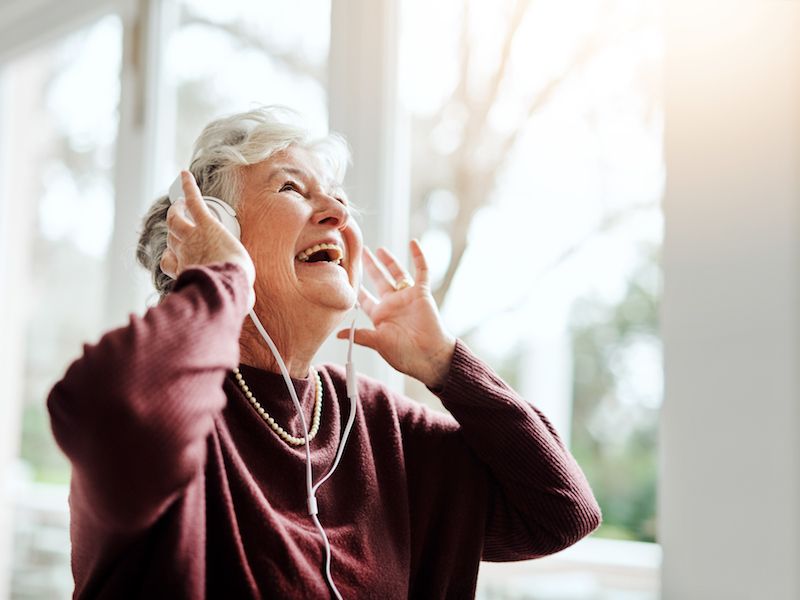
People who work in loud surroundings such as construction sites or at heavy metal concerts are not the only ones affected by noise related loss of hearing. Leisure associated noise exposure can be just as harmful as work related noise exposure. What type of exposure are we discussing? Loud sounds heard through headphones, whether it’s music, gaming, streaming video, or even an audiobook with the volume turned up.
You may not believe your smartphone or tablet can go that loud. The typical pain threshold for human hearing is close to 150 db which is well within the range of these devices. Your ears will actually start to feel pain at this volume. So what’s the answer for safeguarding your ears against volume related injury.
The volume level here is essential. Listen with the volume at or below 60% for 60 minutes or less at a stretch (how long you listen for also matters), this is known as the 60/60 rule.
Your Hearing Aids Can be Set up For Listening to Music
Be sure, if you’re utilizing hearing aids, you don’t try to drown out other noises by turning your streaming music up too loud. Also, ask us about how best to listen to music. If you’re a musician or someone who loves music you might have noticed that most hearing aids are programmed to sharpen the quality of voices…not necessarily music. While listening to music, we can probably make a few modifications to help improve the quality of sound and reduce the feedback.
What Are The Right Headphones For You?
If you don’t own hearing aids, there are lots of choices for purchasing headphones. There are a few things to consider, although it’s largely a matter of personal choice.
Headphones That go Over The Ears
Over the ear headphones are becoming popular again but you probably won’t see the old foam covered ear pieces that used to come with a walkman. They have lots of choices in style and color, are usually endorsed by celebrities, and can be surprisingly expensive. And these headphones go over the entire ear limiting out noise, unlike those old foam ones.
Conventional wisdom is that these are less dangerous than in-ear headphones because the source of the sound is further away from your eardrum. But because the speakers are bigger they are often capable of much louder volume. Noise cancellation can be a good thing as long as you’re not missing out on needed sounds like an oncoming car. But on the upside, you won’t need to contend with outside sound so you can listen to your music at lower volumes.
Earbuds
The standard earbuds are widely recognized for poor sound quality, yet lots of people still use them because hey, they were included with the phone. Plus, with newer devices that no longer have a headphone jack, sticking with Apple’s earbuds can simply be easier.
Earbuds also don’t cancel out sound so the downside is, you have a tendency to crank up the volume. It’s commonly believed that placing earbuds so close to your eardrum is the primary problem but it’s actually the volume.
Isolating or Occluding Earbuds
More comfortable than regular earbuds, models that have a round rubber tip are the choice of many because they help stop outside noise. A seal that stops outside noise from entering is formed by the rubber tip which molds to the shape of the ear. But these earbuds can also block out noises you need to hear and loud volume is still the main concern. And if you wear hearing aids, obviously these won’t work for you.
You might have to try out more than one pair before you find headphones that are appropriate for you. Your expectations, acoustically, will differ depending on what kind of use you usually give them. Enjoying your music at a safe volume and coming across headphones that assist you in doing that is the key.
How to be Certain Your Hearing is Safeguarded
How can you be certain it’s safe? If you own a smartphone, you can get an app for that, you can get the National Institute for Occupational Safety and Health’s free Sound Level Meter app. You can get different apps, but studies has found that the accuracy of these other apps is spotty (additionally, for reasons yet unknown, Android-based apps have proven less reliable). That prompted NIOSH to develop an app of their own. The app lets you measure outside sounds, but it’s also possible to measure the sound coming from your device’s speakers, this means, the actual volume of what’s being sent to your ears. It’s a little bit of effort, but taking these types of preventative steps can help protect your hearing.
